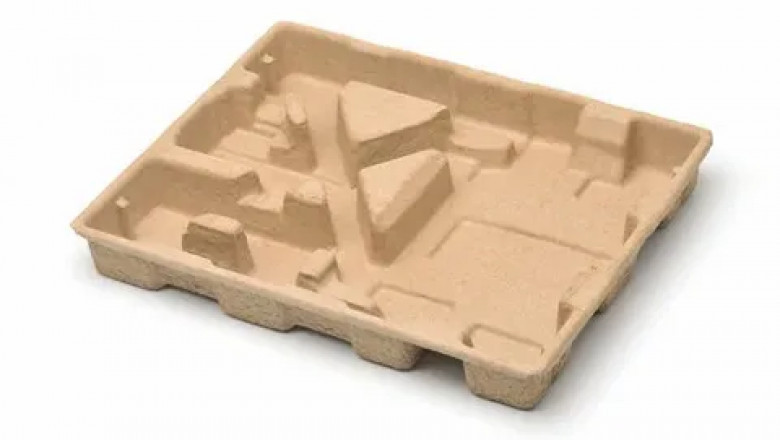views
In recent years, there has been a significant shift in consumer preferences toward sustainability. As people become more environmentally conscious, businesses are responding by adopting eco-friendly packaging solutions. Pulp tray packaging has emerged as a leading alternative to plastic and other non-biodegradable materials. Made from recycled paper, cardboard, or agricultural fibers, pulp trays provide an environmentally friendly solution that reduces waste and minimizes carbon footprints.
Governments and regulatory bodies worldwide are also pushing for sustainable packaging solutions. With stricter regulations on single-use plastics and incentives for biodegradable materials, companies are finding it essential to switch to pulp tray packaging. The combination of consumer demand and regulatory support has accelerated the adoption of this sustainable packaging option across multiple industries, including food, electronics, and consumer goods.
Advantages of Pulp Tray Packaging Over Traditional Materials
One of the key advantages of pulp tray packaging is its biodegradability. Unlike plastic, which can take hundreds of years to decompose, pulp-based packaging breaks down naturally within months, leaving no harmful residues behind. This makes it an attractive choice for businesses looking to enhance their sustainability initiatives while reducing their environmental impact. Additionally, the production of pulp trays requires fewer resources compared to plastic manufacturing, further contributing to environmental conservation.
Another significant benefit is the versatility of pulp tray packaging. These trays can be molded into various shapes and sizes to accommodate different products, making them ideal for packaging delicate items such as eggs, electronic devices, and medical equipment. Their shock-absorbing properties provide excellent protection, reducing product damage during transportation and storage. This adaptability has led to an increased adoption of pulp trays in industries that require durable yet sustainable packaging solutions.
How Businesses Are Adopting Pulp Tray Packaging
Many businesses are making the switch to pulp tray packaging to align with their sustainability goals. Companies in the food industry, for example, are increasingly using molded pulp trays for takeout containers, fruit packaging, and egg cartons. These biodegradable trays not only preserve the freshness of food items but also enhance brand reputation by demonstrating a commitment to environmental responsibility. Consumers are more likely to support brands that prioritize sustainability, making pulp tray packaging a valuable marketing tool.
The electronics industry is another sector that has embraced pulp tray packaging. Brands are now replacing traditional plastic casings with molded pulp trays for packaging smartphones, tablets, and other electronic devices. This shift reduces plastic waste while ensuring that electronic products are securely packed for transportation. By opting for eco-friendly packaging, companies can appeal to environmentally conscious consumers and stay ahead of evolving market trends.
Innovations in Pulp Tray Packaging Technology
Advancements in technology have further enhanced the efficiency and appeal of pulp tray packaging. Innovations in molding techniques now allow manufacturers to create intricate designs that improve the functionality and aesthetic appeal of pulp-based trays. These advancements have made pulp trays more competitive with traditional packaging materials in terms of durability and performance.
Additionally, new coating technologies have been developed to make pulp trays more resistant to moisture and grease, expanding their applications in the food and beverage industry. Some manufacturers are integrating plant-based coatings that maintain the compostability of the packaging while improving its durability. These technological developments ensure that pulp tray packaging continues to meet the evolving needs of businesses and consumers in the eco-conscious market.
The Future of Pulp Tray Packaging in the Green Economy
As sustainability continues to be a top priority for consumers and businesses alike, the future of pulp tray packaging looks promising. With ongoing research and development, new materials and manufacturing techniques are expected to further improve the functionality and cost-effectiveness of pulp-based packaging. This will encourage more industries to transition from plastic to eco-friendly alternatives.
In addition, government policies and corporate sustainability initiatives will continue to drive the adoption of pulp tray packaging. As companies strive to meet environmental goals and reduce their carbon footprint, the demand for biodegradable and compostable packaging solutions will grow. The widespread use of pulp tray packaging is not just a trend but a necessary shift toward a more sustainable and eco-conscious global economy.














Comments
0 comment